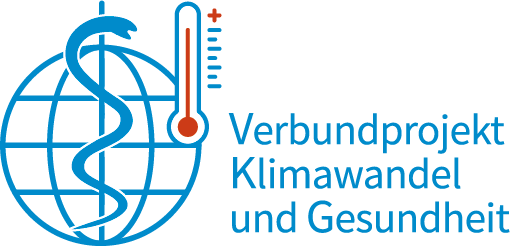The following section contains the riskmaps for the 4 diseases, separated by the years 2020 and 2021.
The calculation for the state of Bavaria is shown. You can navigate in the map area (zoom and pan). By entering the location via the magnifying glass symbol, you can enlarge the map at a desired location. The symbol above takes you back to the overall view.
The slider below allows you to navigate at the time axis. The calculation results are shown on the map for the selected day. The chronological sequence at a certain location can be obtained by clicking on it at the map. A graph then appears below the map showing the calculated values for all available days of the year. The dashed horizontal line indicates R0 = 1 and the vertical solid line indicates the selected day.
Below the map is a drop-down selection box. There you can set the degree to which vectors are considered. For the vectors relevant in Bavaria, there are 3 options for each “> min train”, “without 5% of the extreme values” or “without 10% of the extreme values”. This excludes different areas for which, under the given assumptions, an occurrence is unlikely (see section "Limit values vectors" below)
Interpretation of the risk map:
The results of the epidemiological models can be overlaid with the results of the species distribution models for mosquitoes. This allows a differentiated representation that either only considers the basic reproduction number (the “expected” number of secondary cases that follow a first infected person) or also the climatic suitability for the respective vectors. The R0 value is shown in each case. This mean value tells how many people without immunity can be infected by a potentially infected person. For example, if it is 2, each infected person can infect 2 new people on average - the disease spreads. If it is permanently below 1, the infection disappears locally over time.
Interpretation of the annual graph:
The black points represent the calculated daily values of R0. The blue line represents a simplified chronological sequence to facilitate orientation in the point distribution. If it is above the horizontal dashed line (R0 = 1) for several days, there is a higher risk that a possibly brought in disease could spread.
Limit values vectors:
To ensure this comparability of the models, there are differently sensitive limit value criteria from which value for climatic suitability a pixel in the map is classified as "suitable" for the respective mosquito. These are arranged in ascending order. The lowest limit corresponds to the so-called minimum training presence of the model. Describing the worst-case scenario, all values below this limit value are considered to be climatically unsuitable for the respective species. If you discard the lowest 5 or 10 percent of the observed values and then use the remaining lowest value as the limit value, you get the so-called 5 or 10 percentile limit values, which each provide a more conservative assessment.

